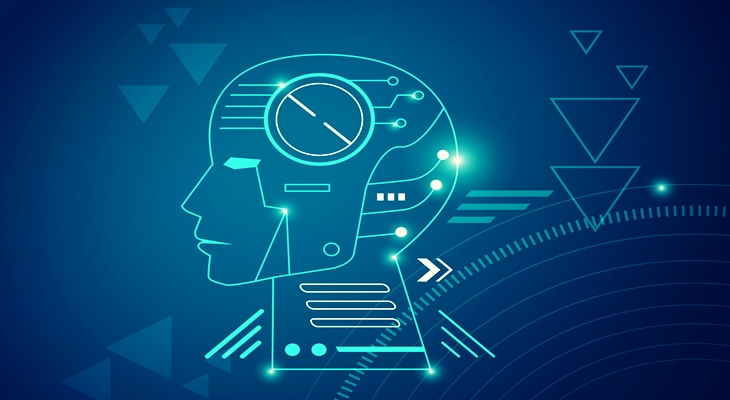Automation has become an important part of the world for improving efficiency across industries. The evolution of robots is the major reason behind this change. Robotic science has helped businesses and factories to get their tasks completed faster, with less error and precision.
Now, robots have acquired almost every industry, and sometimes it becomes confusing where to start as there are many kinds of robots around. But not to worry, in this blog, we will learn about the top 10 types of robots in efficient automation that you need to know. These robots make work easier and improve productivity in many fields. Let's start with the world of robotics!
Evolution of Robotics
The evolution of robotics has been an exciting journey. It began with simple machines designed for repetitive tasks in the early 20th century. By the 1950s, programmable robots appeared, offering more flexibility in factories. Advancements in technology later made robots smarter and capable of complex tasks. Today, robots use sensors to navigate various fields, from manufacturing to healthcare, becoming more autonomous and essential in everyday life.
Robots have developed from simple machines to intelligent systems. They were once only used in assembly lines, but today, they are employed in specific functions in health and agriculture sectors with high precision and independence.
Types of Robots
There are various forms of robots because they are designed to solve specific problems. They perform tasks which humans are unable to do or can do more efficiently. With the rise in technologies and industries, the demand for robots increased accordingly to solve the appearing challenges. From manufacturing lines to healthcare, different sectors required specialized robots to work easily. Here are few types of robots which are used in industries across:
1. Industrial Robots
In factory automation, industrial robots play an important part. These robots are created to handle repetitive tasks like welding, painting, assembling, and packaging. They make production more efficient and reliable. They work with precision, deliver high speed, and never get tired.
Industrial robots help manufacturers boost their output and minimize mistakes. These types of robots are used in car factories and assembly lines, where speed and precision are important for success. A report says the global market for industrial robots has reached a record of USD16.5 billion in 2025.
2. Collaborative Robots (Cobots)
Collaborative robots or cobots are designed to help and improve human efforts. Where traditional robots do specific tasks, cobots work along with humans. At workplaces, they make teamwork more effective. Working with cobots is safe, they make the work easy, especially at such workplaces where human lives are at risk. These types of robots can lift heavy things very easily, assemble parts, and do their job perfectly with 100% accuracy.
Cobots will make automation a more realistic idea for small firms as no additional safety wall and complex coding will be needed in them. As per the published report, it is assumed that Cobots will reach a market size of over USD 7 billion by 2030.
3. Service Robots
Service robots are used in hospitals, hotels, and restaurants. These types of robots help or assist humans with tasks like delivering food, caring for patients, and cleaning floors. They have sensors and cameras so they can move around and avoid any hurdle in between.
As these robots are becoming smarter day by day, they are becoming more useful for customer service and safety. As per sources, the service robotics market is expected to reach USD 40.58 billion by 2025.
4. Autonomous Mobile Robots (AMRs)
Autonomous mobile robots can move by themselves without any help. They are used in warehouses and distribution centers to carry goods. These types of robots use sensors, cameras, and maps to find their way. By doing these tasks, AMRs save time and money by reducing the need for human workers. As per sources, AMRs are being used more in logistics and hold a significant market share of 31%.
5. Humanoid Robots
Humanoid robots are designed to look and act like humans. They interact with people in a natural way, just like we do. You can see them in places like museums, customer service centers, and as personal assistants. These types of robots have features like arms, legs, and faces, and they can greet visitors or answer questions. According to published data, the humanoid robotics market is expected to grow from $1.6 billion in 2022 to $214.4 billion by 2032.
6. Robotic Process Automation (RPA) Robots
The use of robotic process automation (RPA) robots is to perform the automation of routine office activities like data entry, processing of invoices, and email management. These machines do not engage in physical performance but automate things on a computer.
These robots operate faster than the human brain can think and process. They ensure businesses save as much time as possible on this tedious administration work. This is beneficially applied to banking, insurance, and customer support. As per the published report, the global robotic process automation market is expected to grow USD 64.47 billion by 2032.
7. Agricultural Robots
In the farming sector, agriculture robots have changed the way of working. These types of robots help farmers with tasks such as planting seeds, watering crops, and harvesting the produce. There are some robots that are capable of detecting pests and weeds. This helps farmers to use fewer chemicals and, thus, improve crop yields.
By automating the farming tasks, agricultural robots have helped farmers to save time and increase productivity. As per sources, sales of agricultural robots increased by 21%, which reached 20,000 units, and they are expected to increase in the coming years.
8. Medical Robots
In the medical sector, medical robots help doctors and healthcare professionals in performing surgeries and procedures on their patients. These types of robots carry precise tools, and they are able to perform complex operations in an accurate and precise manner.
There are some robots that help to monitor patients and rehabilitation. Medical robots are changing the healthcare industry by improving surgery results and reducing recovery times for patients. According to sources, the market for surgical robots is expected to grow to USD 12.6 billion by 2025.
9. Inspection Robots
These types of robots are used for inspecting equipment or structures. They are used in industries like oil and gas, construction, and aerospace. These robots are usually small and have cameras and sensors. This allows them to reach inside hard areas where humans cannot reach like pipes, tanks, and bridges.
These robots are used for inspections, which helps to save time and make sure that all equipment is working properly. According to a published report, the inspection robot market was valued at USD 3.24 million in 2022 and is expected to grow by 20% per year from 2023 to 2032.
10. Drone Robots
Drone robots, also called unmanned aerial vehicles (UAVs), are used for tasks like surveillance, delivery, and aerial photography. These types of robots cover large areas quickly. It is useful in industries such as logistics, agriculture, and disaster response.
Nowadays, drones are commonly used to deliver packages, inspect infrastructure, and map large areas. As per sources, drones are widely used in many industries, including agriculture, logistics, and disaster response.
Embracing the Future of Robotics
The different types of robots that we discussed in this blog are just a few examples. As technology continues to develop, robots will become an important part of our everyday lives and workplaces.
Whether you work in manufacturing, healthcare, agriculture, or logistics business, automation will make work faster, safer, and more efficient. To stay updated on the latest trends in robotics, it is important to understand how these robots work and how they can help you improve your business or daily tasks.
Robots are no longer a concept of the future, they are already here and helping to build a smarter, more efficient world. What type of robot do you believe would have the greatest impact on your industry or daily life?
Learn more about automation at KnowledgeNile!
FAQ
1. In which sectors do robots help?
Answer: Robots help humans in manufacturing, cleaning, farming, healthcare, industries, automation, and many other sectors.
2. What are the 5 types of robots.
Answer: Five types of robots are industrial robots, service robots, humanoid robots, autonomous mobile robots (AMRs), and robotic process automation (RPA) robots. Each type works on specific jobs in industries, homes, or offices.
3. Mention the 5 generations of robots?
Answer: The 5 generations of robots are:
- First-generation manual control robots.
- Second-generation programmable robots.
- Third-generation autonomous robots.
- Fourth-generation intelligent robots.
- The fifth-generation robots are capable of learning and adapting.
Also Read:






